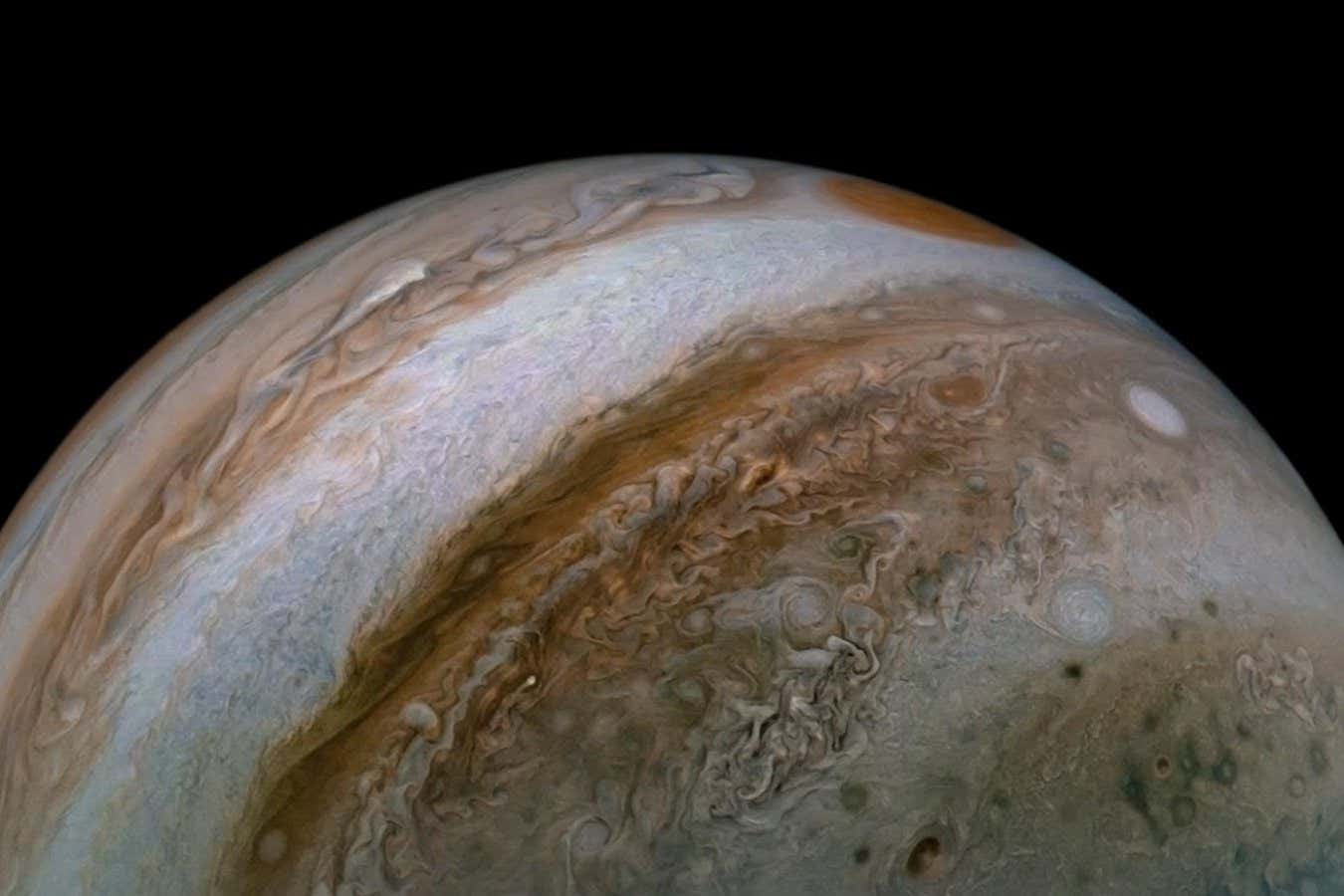
The plasma near Jupiter’s poles is capable of unusual behaviour
NASA/JPL-Caltech/SwRI/MSSS; Oleksuik © CC NC SA
The cosmic neighbourhood of Jupiter is one of the more peculiar places in the solar system, and the plasmas that reside there are no exception. They ripple with a never-before-seen type of wave.
Robert Lysak at the University of Minnesota studies auroras – not just the mesmerising displays of green and blue light on Earth, but also swirls of mostly invisible ultraviolet radiation near the poles of Jupiter.
The key to understanding these alien auroras is understanding the motion of the plasmas – soupy mixtures of charged particles and atoms surrounding the planet – that produce their glow. Based on data collected by NASA’s Juno spacecraft, Lysak and his colleagues found that Jupiter’s auroral plasmas oscillate with a new kind of wave.
The wave is a hybrid of two types of well-understood plasma waves: Alfvén waves, which are produced by the motion of the plasma’s charged atoms, and Langmuir waves, which reflect the movement of electrons in the plasma. Lysak says that, because electrons are much lighter than charged atoms, the two types of waves usually jiggle at very different frequencies.
But the area near Jupiter’s poles has just the right properties for the two to jiggle similarly and combine. This is because the plasmas there have exceptionally low densities and the planet holds them in a strong magnetic field.
“The observed plasma properties are really unusual, not found before and elsewhere in our solar system,” says John Leif Jørgensen at the Technical University of Denmark. Now that Juno’s data has revealed the new waves, we may learn more about the magnetic properties of faraway exoplanets by looking for similar signatures, he says.
Juno is currently still orbiting Jupiter. Lysak says that it could give us an unprecedented look at the giant planet and uncover more of its peculiarities – unless its flight is cut short. It is one of several missions slated to be terminated as part of NASA budget cuts proposed by the Trump administration in May.
“Cutting off the mission when it is getting its best data would be a real tragedy for our field,” says Lysak.
Topics:







